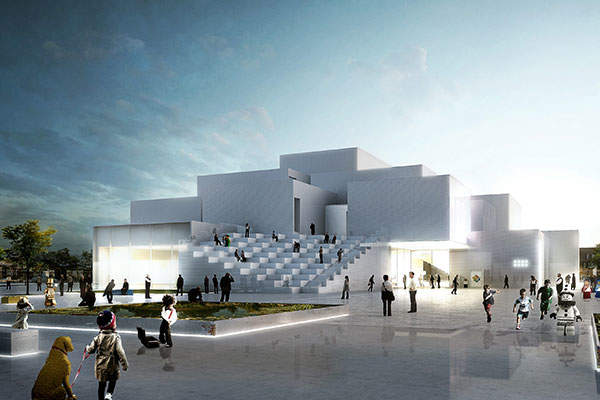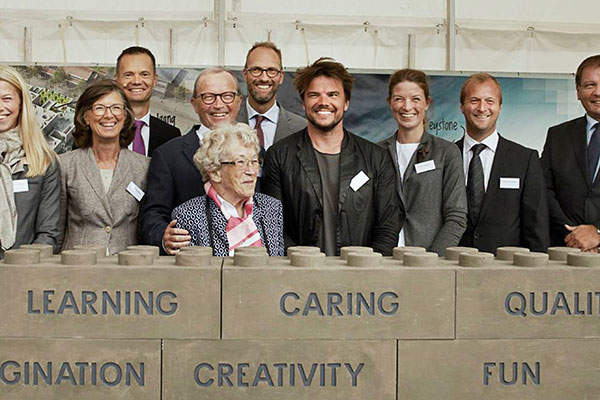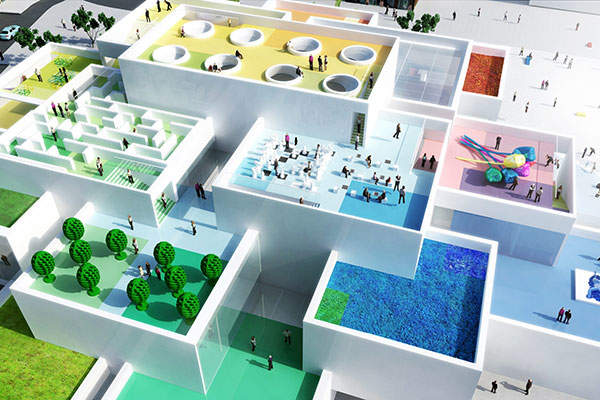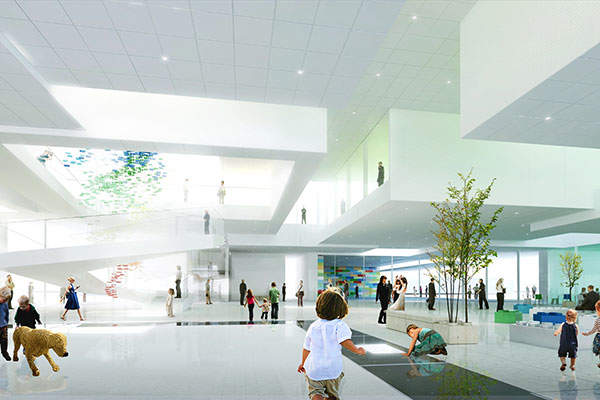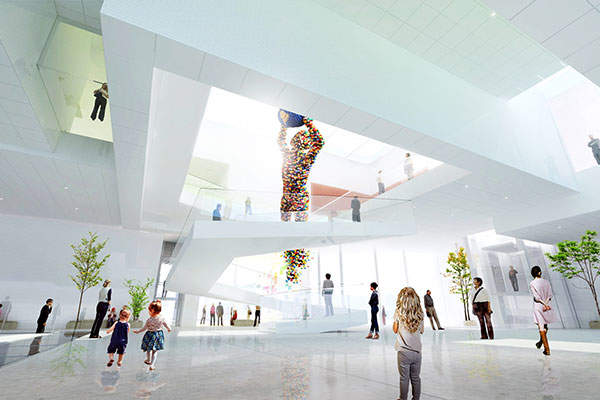The LEGO House, an experience centre built in Billund, Denmark, by Lego Group, to embody the playful yet educational tone of the LEGO toys and offer an inspirational experience to its visitors. It is one of LEGO Group’s contributions to the vision of creating Billund as the Capital of Children.
The Lego Group is 75% owned by KIRKBI and 25% owned by the LEGO Foundation, through Koldingvej 2, Billund.
The ground-breaking ceremony for the LEGO House was held in August 2014 and involved the laying of six giant LEGO-styled bricks, representing the core values of the LEGO experiences, which are imagination, creativity, fun, learning, caring and quality.
The 23m-tall structure having a built-up area of approximately 12,000m² is constructed at the site of a now-razed town hall. Opened in September 2017, the LEGO House attracts approximately 250,000 visitors a year.
Inspiration behind the LEGO House
The ‘Iceberg’ is a 22,600m² residential structure, named for its luminosity, pointed peaks and commanding presence.
The inspiration for the experience centre comes from the LEGO Idea House located in the ancestral house of Kjeld Kirk Kristiansen, the third-generation owner of LEGO Group. All LEGO Group employees visit the Idea House, located on the main street in Billund, to witness and experience the history and values of the LEGO Company.
The interest surrounding the Idea House led to the suggestion of building a facility, where the rich LEGO culture could be shared with the general public. This led to the designing of the LEGO house in Billund, home of LEGO headquarters.
Design and materials used in the LEGO House
The LEGO House can be conceived as a three-dimensional (3D) village of interlocking and overlapping buildings and spaces. It is designed to resemble a pile of white LEGO bricks built on top of each other with internal spaces for exploration and exhibition for the visitors. The LEGO House consists of 8,500m² aboveground and 3,400m² of basement space.
It can be visited either from one building to the next in a continuous movement or experienced as parallel worlds of complete autonomy. Each modular space can be used independently and is designed with its own unique light-setting and dimension.
The main purpose of the LEGO House design is to organise the building functions into 21 white bricks, stacked on top of each other, enclosing the indoor space and topped by the Keystone Gallery, which is inspired by the classic eight-knob LEGO brick. The bricks connect with stairways, bridges and ramps.
The main structure of the LEGO House is primarily built of concrete and steel with casted walls placed in the basement.
LEGO House construction
Concrete casting on the lower deck of the basement began in October 2014 and was completed in December 2014, utilising approximately 1,390m³ of concrete weighing 3,336t. The project’s first two steel beams, measuring 30m and 40m-long and weighing 7.3t and 10.5t, respectively, were installed in February 2015.
Preparations to place the ground floor deck on top of the basement started in March 2015. The placement of casted walls in the basement was completed in April and the covering of the basement was completed in May.
Facilities at the LEGO experience centre
The LEGO experience centre features 7,600m² of exhibition areas, a café, a unique LEGO store and a 1,900m² public square. Public entry will be free to a number of roof-top gardens from the outside. Unlimited access will be provided over and across the LEGO House using stairs and terraces. The LEGO House has disabled-friendly features and is accessible to all.
The ground level of LEGO House consists of tickets office, conference room, wardrobe and resting room, and the 2,000m² LEGO Square.
A cluster of galleries overlaps above the square. The top of the building is also covered with a masterpiece gallery, which is made of a pair of four LEGO brick. Visitors can experience a 360o view of the city from the top floor.
The most prominent feature of the LEGO House is the four specially-designed play zones from different, but interconnected play-worlds. The four zones, which are spread across the first and the second floors, are reserved for paying guests, while the exhibits and activities offered in these zones will offer guests with hands-on and minds-on experiences – the LEGO House experience. The four zones which are called the experience zones are based on four different colours. Each colour represents a unique aspect such as red colour for creative skills, green representing social, blue for cognitive skills, and yellow for emotional.
The visitors can witness the rich history and legacy of the LEGO family and the development of the LEGO products, the LEGO brand and the LEGO Group.
LEGO House won the Civic Trust Award 2019 and it is nominated for EU Mies Award 2019.
Contractors involved
Danish architecture firm Bjarke Ingels Group (BIG) and American architecture practice Ralph Appelbaum Associates (RAA) designed and provided interior planning for the LEGO House.
Graphic design is provided by e-Types, while engineering support is provided by Dr Lüchinger+Meyer Bauingenieure, Jesper Kongshaug and Gade & Mortensen Akustik. Danish engineering company COWI is the consulting engineer.

